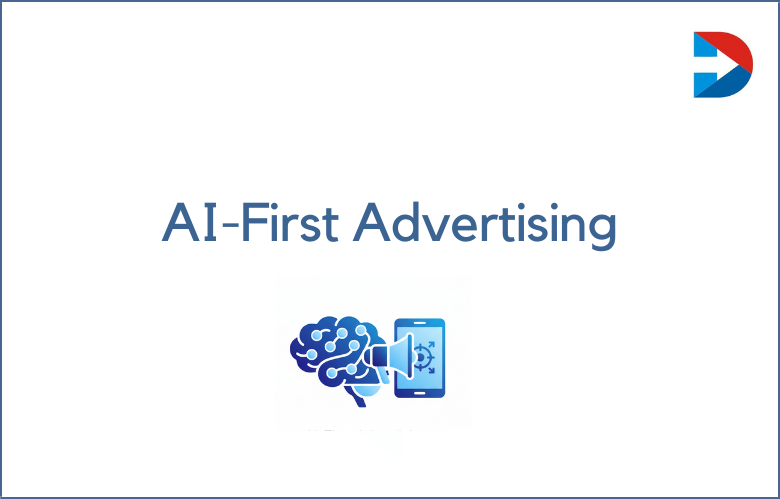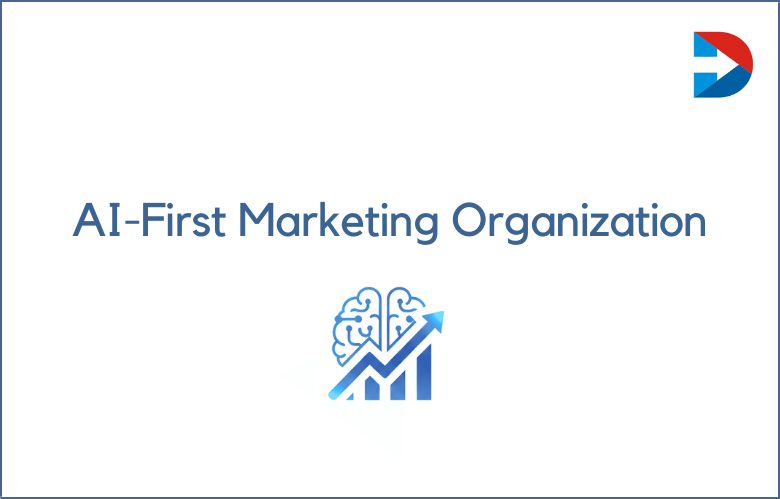In a fast-paced business environment, companies must seek alternative ways to stand out from the competition and capture the consumer’s attention.
Thus, many have adopted the integrated marketing communication (IMC) process, which blends various promotional activities across multiple channels to create a unified message.
An integrated approach streamlines communication and messaging from the business, making it more effective and efficient in reaching consumers.
This article discusses the essentials of an effective IMC strategy and why businesses must adopt it.
What is Integrated Marketing Communication?
Integrated Marketing Communication (IMC) is a strategic marketing communication approach that combines various methods and tools under a single umbrella to deliver a cohesive and consistent message.
This means using different communication channels, such as advertising, PR, social media, and direct marketing, to create a consistent brand message that resonates with the target audience.
The ultimate goal of IMC is to coordinate and integrate all marketing communication efforts to achieve maximum impact and drive business growth.
Why is Integrated Marketing Communication important for brands
Effective IMC can lead to several benefits for brands, such as:
– Improved brand recall:
Consistent messaging across different channels can improve brand recall among customers.
– Increased brand loyalty:
Authentic and genuine communication can help build customer trust and loyalty, leading to long-term relationships.
– Better ROI:
A coordinated and integrated approach can maximize the impact of marketing efforts and provide better ROI than siloed marketing activities.
How does the Integrated Marketing Communication process work
The IMC process involves the following steps:
Defining the Target Audience
Before any campaign is created, businesses need a clear understanding of who they are speaking to. This involves:
Customer Profiling: Collect demographic data (age, gender, income, location) and psychographic data (interests, values, lifestyles).
Motivations and Pain Points: Understand why customers make purchasing decisions, what problems they face, and how your product or service provides a solution.
Segmentation: Break down audiences into groups (for example loyal customers, first-time buyers, deal-seekers) so that communication can be personalized.
Customer Journey Mapping: Identify touchpoints (social media, email, retail, website) where customers engage with the brand.
Developing a Communication Strategy
Once the audience is defined, businesses need to plan what and how they want to communicate. This stage involves:
Core Message: Define the brand’s value proposition, what makes the product or service different.
Tone and Style: Decide whether the brand voice should be formal, casual, inspiring, or authoritative, depending on the audience.
Content Plan: Map out themes and stories that align with audience needs (for example problem-solving guides, success stories, product demonstrations).
Call-to-Action (CTA): Ensure each message directs the audience towards a desired outcome such as “Sign up,” “Shop now,” or “Learn more.”
Consistency: Keep the same key message across all platforms while adapting tone and format to fit each channel.
Integrating Marketing Communication Channels
The power of IMC comes from aligning all promotional tools and platforms to deliver the same unified message. This includes:
Advertising: Online ads, print, TV, or outdoor campaigns that grab attention.
Public Relations (PR): Media coverage, press releases, and influencer partnerships that build credibility.
Sales Promotion: Discounts, loyalty programs, or limited-time offers that drive immediate action.
Direct Marketing: Personalized emails, SMS, or app notifications that engage customers one-on-one.
Personal Selling: Sales representatives or customer support that reinforce the brand message.
Digital Media: Social media, SEO, content marketing, and online ads that amplify reach.
Execution and Monitoring
This stage ensures that strategy moves from planning into action and results are measured for effectiveness.
Execution: Launch campaigns across chosen platforms, ensuring teams (marketing, sales, PR, digital) are aligned.
Coordination: Each channel must complement the others. For instance, a social media post could direct users to a landing page linked in an email.
Tracking Metrics: Use analytics tools to measure performance such as engagement rates, click-throughs, conversion rates, brand mentions, and ROI.
Feedback Loops: Listen to customer responses through surveys, comments, or customer service insights.
Adjustments: Refine messaging, redesign creatives, or shift budgets to better-performing channels.
The Importance of Integrated Marketing Communication
Implementing IMC helps businesses build a stronger brand identity and establish a deeper connection with their target audience.
When the message is consistent across all channels, customers are more likely to remember it and develop trust in the brand. This can increase brand loyalty and lead to better customer retention rates.
IMC also helps businesses save money by streamlining their communication efforts and avoiding redundant messaging.
Understanding the Integrated Marketing Communication Process
In today’s fast-paced world, businesses have realized the importance of effective customer communication.
The marketing landscape has evolved, and companies now focus on integrating their communication strategies to create a consistent and seamless experience for their target audience.
This is where Integrated Marketing Communication (IMC) comes into play. We will explain the concept of IMC and its importance for business success.
Research and Analysis
Research and analysis should always be the starting point of any IMC strategy. Before devising an integrated marketing plan, it is vital to understand your target audience and their preferences.
You can create targeted messages that resonate with your audience by analyzing demographics, media usage, and psychographic variables. Here are some essential steps in research and analysis:
Conduct a market analysis to determine your company’s strengths and weaknesses relative to your competition.
Study customer behavior by analyzing their purchasing patterns, preferences, and the use of digital channels (e.g., social, mobile, and website analytics).
Gather data on customer segments, product offerings, competitive landscape, and marketing channels.
Use consumer insights to develop a communication strategy that resonates with your target customers.
Developing a Message Strategy
Developing a message strategy involves creating a core message communicating your value proposition to the target audience.
With the avalanche of digital channels, businesses need to amplify their messaging to get noticed and remembered in a crowded marketplace. A messaging strategy should address the following questions:
Choosing the Right Channels
Once you have a clear message strategy, the next step is choosing the proper channels to deliver those messages.
Your selection of channels depends on the characteristics of your target audience and their preferred media usage. The most common marketing channels include social media, mobile, email, print, television, radio, and events.
An excellent way to select your channels is to analyze your target audience, determine their media consumption patterns, and choose the channels that best meet your goals.
Execution and Measurement
Execution involves implementing your strategy and delivering your message across all chosen channels.
Execution requires collaboration between marketing and sales teams, customer service teams, and marketing partners.
It is also crucial that all messaging remains consistent across all communication channels.
Once the execution is complete, it is essential to track and measure the results of your communication strategy to assess its effectiveness. Some critical metrics to track include:
Conversion rates
Click-through rates
Engagement rates
Awareness metrics
Return on Investment (ROI)
Steps in the Integrated Marketing Communication Process
The IMC process involves several key steps, including:
Understanding the Target Audience
Every IMC process begins with knowing who the message is meant for.
Market Research: Collect data on demographics (age, income, gender, location), psychographics (values, interests, lifestyles), and behaviors (buying habits, digital usage).
Segmentation: Group audiences into meaningful categories such as loyal customers, new prospects, or occasional buyers.
Pain Points and Motivations: Identify what problems customers face and what inspires them to act.
Customer Journey Mapping: Chart out where and how customers interact with your brand (for example social media, email, retail outlets, customer service).
Developing a Comprehensive Marketing Strategy
Once the audience is clear, the next step is to create the blueprint for communication.
Define Objectives: These could be raising awareness, generating leads, boosting sales, or improving loyalty.
Craft a Core Message: Decide what the brand wants to say and how it should be remembered.
Tone and Positioning: Choose a style of communication that aligns with both brand identity and audience expectations.
Call-to-Action (CTA): Every message should guide the audience toward a specific outcome (sign up, purchase, share, attend).
Budgeting and Resource Allocation: Plan how much will be invested in each channel and activity.
Implementing the Marketing Mix
This step is about choosing the right tools and channels and making sure they work together.
Advertising: Traditional (TV, radio, print, outdoor) and digital (social ads, display ads, YouTube).
Public Relations (PR): Press releases, media coverage, partnerships, crisis communication.
Sales Promotion: Discounts, coupons, contests, loyalty programs.
Direct Marketing: Email campaigns, SMS, app notifications.
Personal Selling: Sales representatives, consultations, live demos.
Digital Media: Social media engagement, SEO, content marketing, influencer collaborations.
Tracking and Measuring Results
Finally, no IMC process is complete without evaluation.
KPIs to Track: Engagement rate, click-through rate, conversions, brand awareness metrics, customer retention, ROI.
Tools to Use: Google Analytics, social media insights, CRM dashboards, customer surveys, A/B testing.
Feedback Analysis: Gather customer opinions, complaints, and reviews to see how messages are perceived.
Optimization: Adjust messaging, reallocate budgets, or refine channels based on what works best.
Examples of Integrated Marketing Communication
Social Media
Social media platforms like Facebook, Twitter, and Instagram give businesses a unique way to connect with customers.
Social media allows businesses to share updates, special offers, and other information with their followers. Social media can also create and share content promoting the company and its products or services.
Email Marketing
Email marketing is a form of direct marketing that involves sending promotional messages to customers via email. Businesses can use email marketing to promote new products or services, share special offers, or stay in touch with customers.
Online Advertising
Online advertising is a form of marketing that involves placing ads on websites or search engines.
Online advertising can promote a business or its products or services. Online advertising can target specific demographics, making it an effective way to reach potential customers.
Search Engine Optimization
Search engine optimization (SEO) is the process of improving the visibility of a website in search engine results pages (SERPs).
By optimizing their website for search engines, businesses can increase their chances of being found by potential customers.
Content Marketing
Content marketing is a form of marketing that involves creating and sharing content that promotes a business or its products or services.
Content marketing can generate leads, build brand awareness, or keep customers informed about the latest news from the company.
Public Relations
Public relations (PR) is the process of managing the reputation of a business or individual. PR can be used to build relationships with customers, generate positive publicity, and respond to negative press.
Event Marketing
Event marketing is a form of marketing that involves planning and hosting events to promote a business or its products or services.
Events can include trade shows, conferences, product launches, and more. Event marketing can be an effective way to generate leads and build brand awareness.
Ways to Integrated Marketing Communication Process
| Step | Description |
|---|---|
| Identifying Target Audience | Define the specific group of consumers the communication is intended to reach. |
| Determining Communication Objectives | Establish what the brand wants to achieve (awareness, knowledge, preference, purchase, loyalty). |
| Designing the Message | Craft a clear, persuasive, and consistent message aligned with the brand’s positioning. |
| Selecting Communication Channels | Choose the most effective mix of channels such as advertising, PR, sales promotion, personal selling, digital, and social media. |
| Allocating Budget | Decide how much to spend on different communication tools based on objectives and strategy. |
| Coordinating IMC Tools | Ensure all promotional activities are integrated and deliver a unified brand message across channels. |
| Implementing the Campaign | Execute the communication plan across selected platforms consistently. |
| Measuring Results | Evaluate the effectiveness of communication through metrics such as reach, engagement, conversions, and ROI. |
| Feedback and Control | Collect audience feedback, analyze outcomes, and adjust strategies for continuous improvement. |
Conclusion:
Integrated Marketing Communication (IMC) is a powerful tool businesses can leverage to create a consistent brand message.
Through research, message development, choosing the proper channels, and execution, businesses can create targeted campaigns that reach their intended audience, platforms, and devices.
Creating an effective IMC process takes time and resource investment, but the benefits of having an integrated marketing strategy are long-lasting and worth the effort.
By using metrics to measure the effectiveness of campaigns, businesses can make informed decisions that help them stay ahead of the competition. So, adopt an IMC process today and start enjoying its benefits.
Integrated Marketing Communication Process: FAQs
What Is Integrated Marketing Communication (IMC)?
Integrated Marketing Communication (IMC) is a strategic approach that combines multiple marketing and communication tools such as advertising, PR, digital media, and sales promotion under one unified strategy to deliver a consistent brand message.
Why Is Integrated Marketing Communication Important for Businesses?
IMC ensures all brand messages across platforms are consistent, which strengthens brand recall, builds trust, improves customer loyalty, and generates better ROI compared to fragmented campaigns.
What Are the Key Steps in the Integrated Marketing Communication Process?
The main steps include identifying the target audience, developing a communication strategy, integrating marketing channels, executing campaigns, monitoring results, and refining based on feedback.
How Do Brands Identify Their Target Audience in IMC?
Brands profile customers using demographics, psychographics, motivations, and customer journey mapping to segment audiences into groups for personalized communication.
What Does Developing a Communication Strategy Involve?
It involves defining the core message, deciding on tone and style, creating a content plan, setting calls-to-action, and ensuring message consistency across all channels.
Which Marketing Channels Are Integrated in IMC?
IMC integrates advertising, PR, sales promotions, direct marketing, personal selling, digital media (social, SEO, email), and event marketing to deliver a seamless message.
How Does IMC Improve Brand Recall?
By repeating consistent messaging across different platforms, IMC helps consumers remember the brand more easily, boosting recall and recognition.
How Can IMC Increase Customer Loyalty?
Authentic and consistent communication builds trust with customers, leading to stronger relationships and long-term loyalty.
What Role Does Budgeting Play in IMC?
Budget allocation ensures resources are invested in the right mix of communication channels to maximize campaign impact and ROI.
How Do Businesses Measure IMC Effectiveness?
Brands use KPIs like engagement rates, conversions, click-through rates, brand mentions, awareness metrics, and ROI to measure effectiveness.
What Is the Role of Feedback in the IMC Process?
Feedback loops, such as customer surveys, reviews, and social comments, help businesses evaluate message impact and make adjustments to improve future campaigns.
What Are Some Examples of Integrated Marketing Communication Channels?
Examples include social media campaigns, PR press releases, loyalty programs, email marketing, influencer partnerships, SEO, and online advertising.
How Does Research and Analysis Support IMC?
Research identifies customer needs, media habits, and competitor strategies, ensuring campaigns are data-driven and aligned with audience preferences.
What Is a Message Strategy in IMC?
A message strategy defines the brand’s value proposition, positioning, tone, and the call-to-action to guide consistent communication across platforms.
How Do Brands Choose the Right IMC Channels?
Brands select channels based on target audience preferences, media consumption habits, and campaign objectives (awareness, sales, loyalty).
What Is the Role of Execution in IMC?
Execution involves launching campaigns across channels, ensuring alignment between teams, and keeping the messaging unified.
How Does IMC Help Save Marketing Costs?
By integrating communications, IMC avoids redundant messaging, streamlines efforts, and reduces wasted spend across fragmented channels.
What Metrics Should Businesses Track in IMC Campaigns?
Important metrics include conversion rates, engagement rates, ROI, brand awareness levels, and customer retention figures.
How Does IMC Enhance Digital Marketing Efforts?
IMC combines digital tools like social media, SEO, and content marketing with traditional channels, amplifying message reach and effectiveness.
What Are the Long-Term Benefits of Integrated Marketing Communication?
IMC builds a strong, unified brand identity, improves customer trust, ensures cost efficiency, and creates sustainable business growth.




